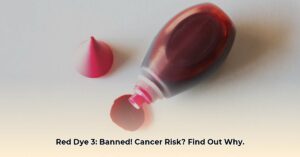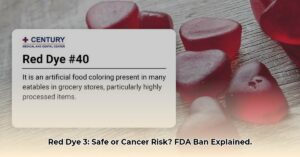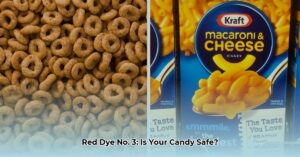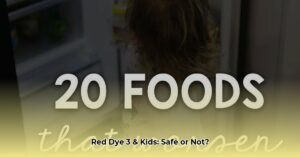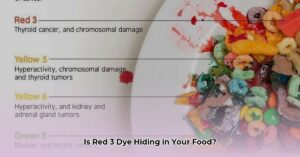The FDA is banning Red Dye 3 (erythrosine) in ingested foods, dietary supplements, and orally administered medications due to concerns about potential health risks. This ban, effective January 15, 2027, for food and supplements, and January 18, 2028, for ingested medications, will likely impact a range of products from candies to pills. Here’s what you need to know.
Why is Red Dye 3 Banned?
The ban stems from studies suggesting a link between Red Dye 3 and cancer in rats. While the mechanism observed in rats might not directly translate to human risk, the FDA invoked the Delaney Clause, a provision in the Federal Food, Drug, and Cosmetic Act that mandates a ban on any food additive shown to cause cancer in any animal, regardless of the dose.
Some research also suggests a possible link between artificial food colors, including Red Dye 3, and behavioral changes in children, such as hyperactivity, although this remains an area of ongoing research and debate among experts.
Which Products Are Affected?
The ban applies to any ingested product containing Red Dye 3, including:
- Food: Candies, baked goods, processed snacks, beverages, and more.
- Dietary Supplements: Certain vitamins and supplements containing the dye.
- Orally Administered Medications: Some liquid medications, capsules, and tablets.
This ban does not affect topically applied medications or cosmetics. The FDA restricted Red Dye 3 in these products back in 1990 due to separate safety evaluations. Imported foods are also subject to this new ban.
Here’s a table summarizing the potential impact:
| Product Category | Examples |
|---|---|
| Candies | Gummy bears, hard candies, some chewing gum |
| Baked Goods | Cakes, cookies, frosting, pastries |
| Processed Snacks | Fruit snacks, flavored chips, some cereals |
| Beverages | Sodas, juices, sports drinks |
| Over-the-Counter Drugs | Cough syrups, liquid pain relievers, some vitamins |
| Prescription Drugs | Certain capsules and tablets |
What Are the Alternatives?
Manufacturers are already transitioning away from Red Dye 3, exploring alternatives such as:
- Red Dye 40: A common artificial colorant, though it is currently under further scrutiny by researchers.
- Natural Colorings: Beet juice, turmeric, and other plant-based extracts offer potentially safer options. However, replicating the vibrant hue and stability of Red Dye 3 can be challenging.
The following table compares these alternatives:
| Dye | Source Examples | Potential Concerns |
|---|---|---|
| Red Dye 3 | Artificial, previously common | Cancer in rats (FDA banned) |
| Red Dye 40 | Artificial, current alternative | Undergoing further study |
| Natural Colors | Fruits, vegetables | Generally considered safe, may affect color and stability |
What You Can Do
- Check Labels: Look for “Red Dye No. 3,” “Red 3,” “FD&C Red #3,” or “erythrosine” on ingredient lists.
- Consider Alternatives: Explore products using natural colorings.
- Stay Informed: Refer to the FDA website for updates and further information.
Looking Ahead
The FDA’s ban on Red Dye 3 is part of a larger conversation about food additives and their potential long-term health effects. It underscores the ongoing evolution of scientific understanding and regulations related to food safety. While the ban is based on a precautionary approach, it encourages consumers to be more aware of ingredients and potentially motivates further research into alternative coloring methods.


